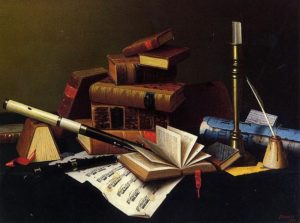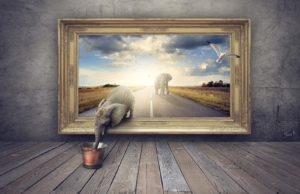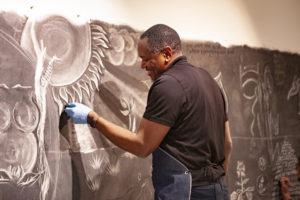 Art and discipline are akin; these two branches of expression and practice work together in order to produce structure and allow the expression of an idea through that structure. Some may believe it obvious: art and discipline’s interdependence, but the two are often described as completely different forms. The typical connotations associated with discipline and art are strict regulation and extremely liberal and raw expression with little form, respectively.
Art and discipline are akin; these two branches of expression and practice work together in order to produce structure and allow the expression of an idea through that structure. Some may believe it obvious: art and discipline’s interdependence, but the two are often described as completely different forms. The typical connotations associated with discipline and art are strict regulation and extremely liberal and raw expression with little form, respectively.
I was once aware of both the detachment and coalition of art and discipline, conscious that the two were related somehow, but I was unaware of how different and how indifferent they were. I recognized that an artist needs practice to better their ability of expression through a medium, but I was not aware of the rules and absolute structure that stopped art from actually being “raw expression” with little form. Concepts like lighting, the horizon line, and perspective are essential parts of the foundation needed for the creation of a proper composition in an area like visual arts; artists follow these basic rule to connect their art and simultaneously explore the options and possibility surrounding these rules.

For example, they may experiment with the expectation or limitations of a normal horizon line, a reference to a physical/visual boundary where sky separates from land or water, ultimately creating depth. Of course, experimentation beyond these rules is only possible with mastery of the rules—the same can be applied to music and time signature, a notational convention used in Western musical notation to specify how many pulses are contained in each measure; once a musician establishes a proper understanding of time and rhythm, they can explore the limits and possibilities of the rule known as the time signature.
Art and discipline function together, in the rules and limits, as well as the experimentation beyond these limits after mastery of the limit, as to make the art not formless—this realization became especially clear in the presence of Steve Prince, Trumpeter Herb Smith, Professor Lytton Smith, and several other practitioners of art and discipline.
The week I spent in the exposure of Steve Prince, an artist from New Orleans

, educator, and art evangelist who expresses his work through several mediums, including: printmaking, drawing and sculpture, was extremely eye-opening in helping see the interdisciplinarity between art and discipline—throughout the week I gained exposure to Steve’s linoleum prints, as well as another medium he used to express his ideas: charcoal drawing.
Throughout this week, he lectured the class in the discipline and foundation that was necessary to wield these mediums. After this, I began to witness not only the discipline needed in order to express art through some medium (music, sculpting, etc.), but the similar ideas present in the execution of art and the ideas present in something more formally represented as a strict discipline like math and the concept of a line.
I began to see the raw expression, assumed to be only in art, in the “strict” disciplines. I began to see the inclusion of interconnected concepts between art and discipline even further with the introduction of the line concept with Lytton Smith, discussing the expectations of the line and what it was and how to rethink what a line was.
This discussion, alongside the week with Steve Prince made me curious of all the connection shared between art and discipline, as well as cross-disciplinary material. I hope that with further exposure to several other fields I can observe these connections and further observe how structure and expression are used everywhere.
Bibliography
Senge, Peter M. “The Fifth Discipline: The Art and Practice of the Learning Organization: Book Review.” Consulting Psychology Journal: Practice and Research, vol. 45, no. 4, 1993, pp. 31–32., doi:10.1037//1061-4087.45.4.31.
